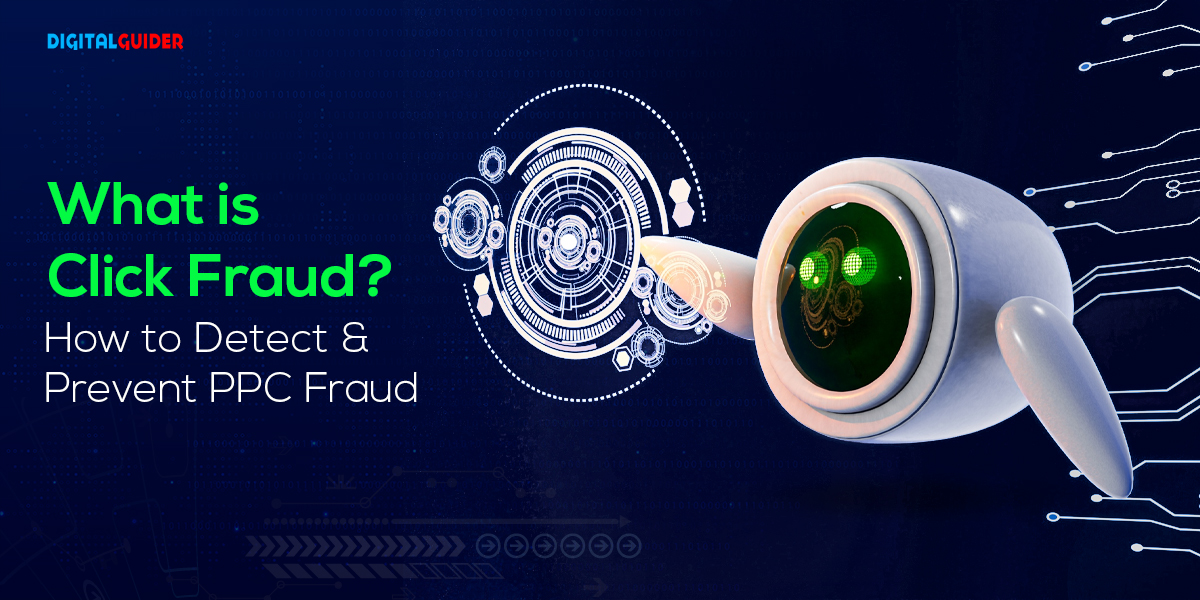Last Updated on December 7, 2023 by Lisa Gibson
Fraudsters have been trying to get their hands on people’s money for as long as businesses have been around. And as companies have gotten more and more digital, so have criminals. Click fraud is a huge problem, and it’s something that we should all be worried about. It’s not just about losing money; it’s about losing trust. Advertisers in the vast world of PPC have to worry about click fraud, a sneaky way for fraudsters to take advantage of people who click on their ads. These people or automated bots can take money from your budget and mess up your campaign.
As Platus said, you must spend money to make money. PPC advertising can give you a good return on your investment – as long as you don’t fall victim to click fraud. PPC can be a great way to promote your business if you know what click fraud is and the best ways to prevent this fraud.
What is Click Fraud?
Click fraud occurs when a user or bot clicks on an advertisement, button, or hyperlink to deceive the platform into believing there is more engagement than there is. Click fraud increases advertising costs, reduces conversion rates, and distorts user data for online companies.
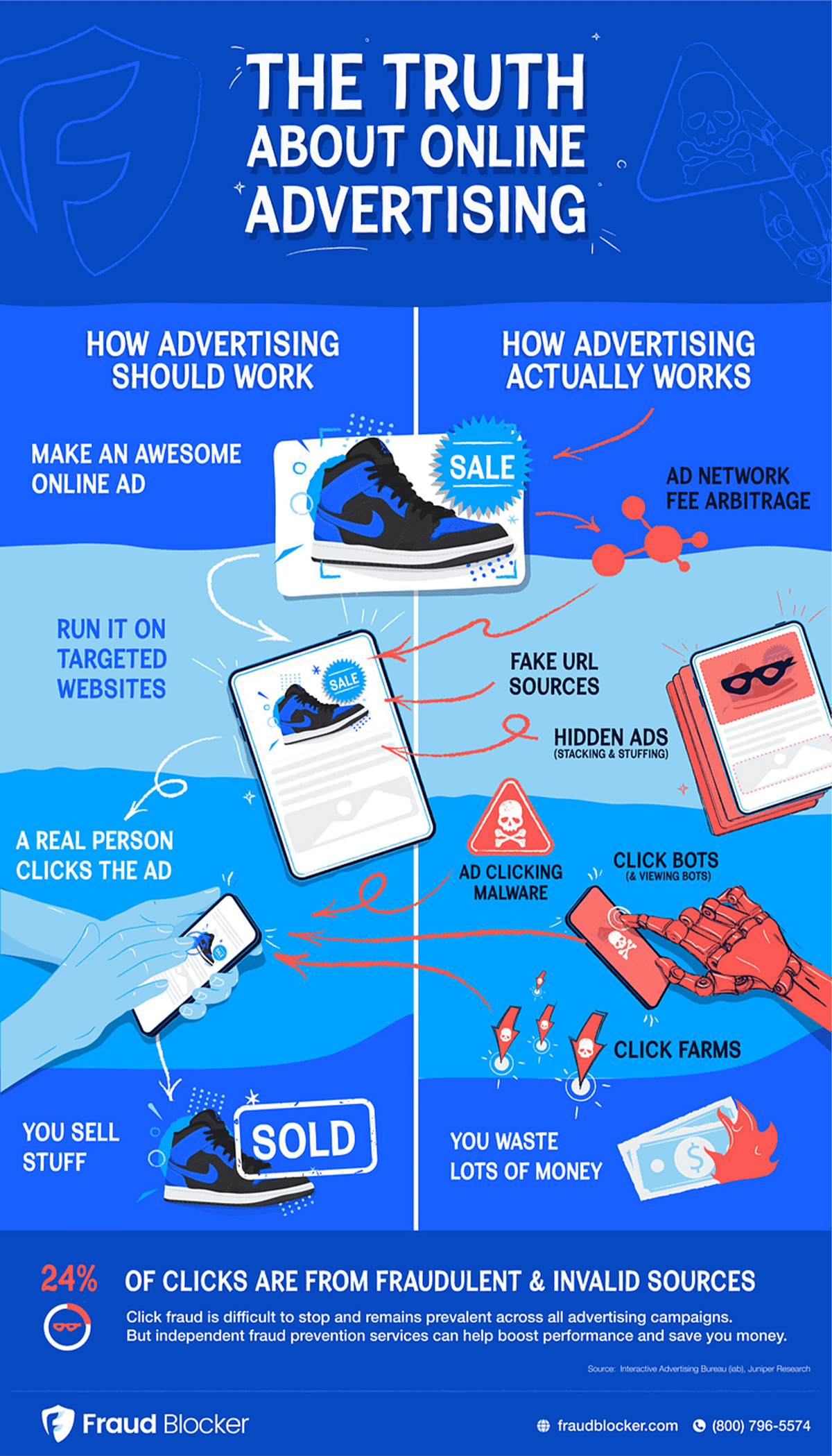
Is Click Fraud Illegal?
Yes, through click fraud, anyone can try tricking PPC ads to make more money for their website as you’ll get paid for hosting your website based on how many people visit your site and click on your ads or take money from a business’s advertising budget.
Here’s a classic example of click fraud that will make you understand why this is so bad –
Let’s say you are an ad agency running a paid search (PPC) campaign for your new retail store. You have spent much money on this campaign to bring tech-savvy customers to your eCommerce store. Your ad appears on a well-known tech website, showing your latest product with a great offer.
Now, here comes the scammer; let’s call it – Clickbot Charlie.
Clickbot Charlie is a malicious automated bot used by fraudsters. Its sole goal is to simulate real clicks on your ad. It masquerades itself as a real user visiting the tech website your ad is displayed. With no genuine interest in your products, Clickbot Charlie clicks on your ad continuously. However, Clickbot Charlie does not just click on your ad once. It is designed to click on your ad multiple times throughout the day, continuously draining your ad budget.
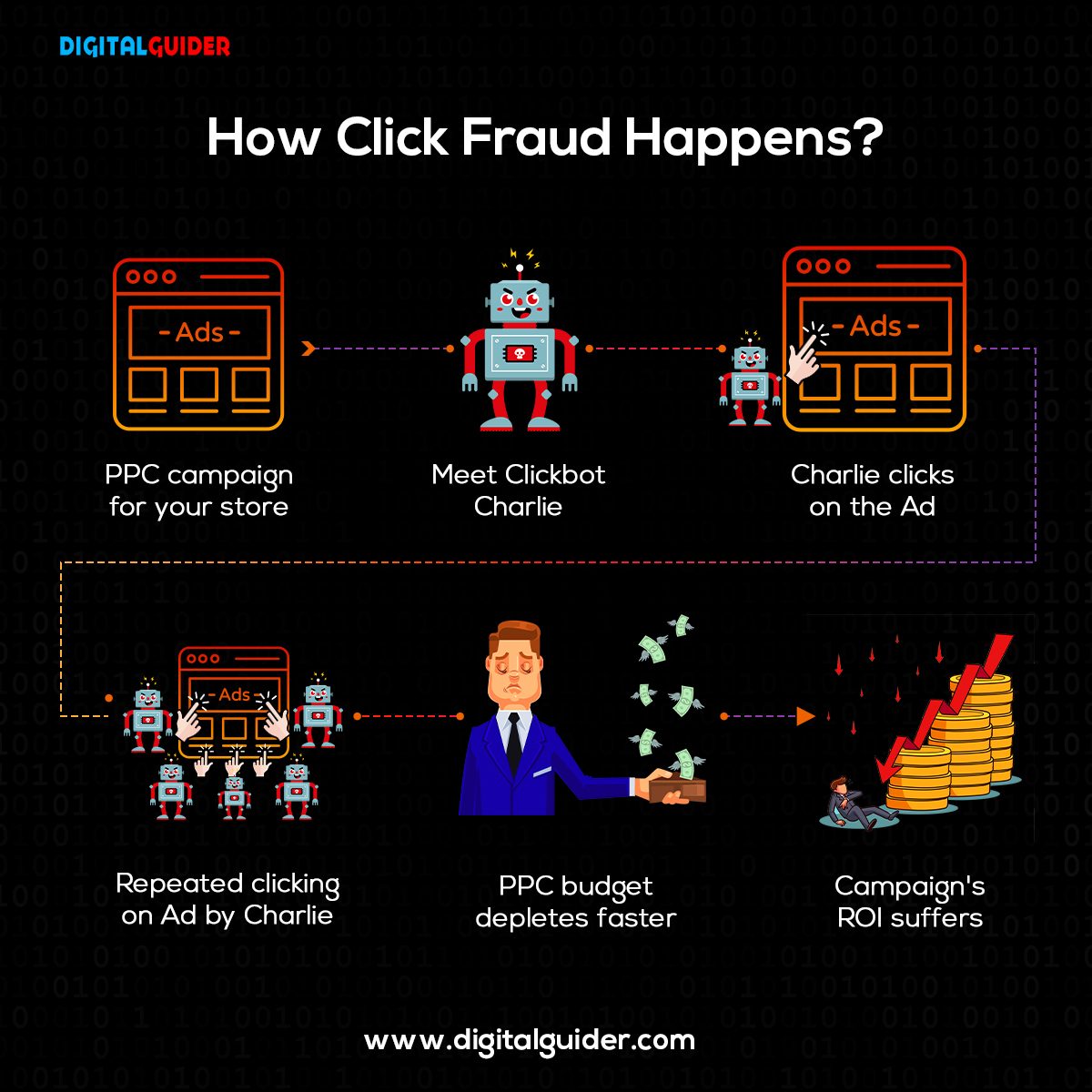
Clickbot Charlie’s action may not seem bad, but it’s bad news when you look at it all together. You’re running out of PPC money faster than expected, and you see impressive clicks on the analytics dashboard. But these clicks don’t lead to engagement or conversions when you look closer. As you’re running out of money, your ad’s performance gets worse and worse, and your campaign’s ROI takes a downfall. Even worse, legitimate people might not even have seen your ad in the first place because you’ve run out of money due to fraudulent clicks.

Different Types Of Click Fraud
Attackers may use virtual private networks (VPNs) and IPs to change their location and engage in multiple clicks from different geographic regions, making it appear that the clicks come from diverse users. Here are different types of click fraud commonly seen on the web.
Manual Click Fraud
Imagine you provide a home remodeler service & run ads for that, but a sneaky individual manually clicks on ads without intending to make a genuine purchase. These fraudsters may be competitors, disgruntled users, or people looking to harm a business’s advertising efforts.
Clickbot Fraud
Meet Clickbot Charlie again! Clickbot Fraud involves automated bots like Charlie, programmed to simulate human clicks on ads. These bots can generate fraudulent clicks, draining ad budgets and distorting campaign metrics.
Competitor Clicks
In this scenario, rival businesses intentionally click on each other’s ads to exhaust their budgets and reduce their visibility in the market. It’s a cut-throat tactic to gain a competitive advantage.
Ad Stacking
Picture an ad disguised by multiple layers of hidden ads stacked on top of each other.

Source: Google
When a user clicks on the visible ad, they unintentionally click on hidden ads as well, generating multiple fraudulent clicks.
Ad Injection
Imagine downloading a seemingly harmless software or browser extension, only to discover that it injects additional ads into websites you visit. These injected ads are often clicked by users unknowingly, leading to Click Fraud.
Mobile Emulator Fraud
With the rise of mobile advertising, fraudsters employ mobile emulators to simulate clicks on ads. These emulators mimic mobile device behavior, making differentiating genuine clicks from fraudulent ones difficult.
Pixel Stuffing
In Pixel Stuffing, fraudsters hide tiny, invisible pixels within ads. When these ads are loaded on web pages, the pixels trigger fraudulent clicks without the user’s knowledge.
Click Farm
In a hidden corner of the internet, click farms exist—operations that employ real people to click on ads en masse. These individuals are paid to sit for hours, mindlessly clicking on ads to generate artificial traffic. Click farms give the illusion of genuine interest, but the clicks they produce offer little to no value to advertisers. Check out this video to better understand how click farms work.
Each kind of Click Fraud is a significant threat to PPC advertising campaigns. People avoid SEO activities & spend a lot of money on ads hoping to reach real & targeted people. But these scams take cash out of your pocket, change how you measure performance, and destroy trust in the digital advertising world.
How To Detect Click Fraud?
Check IP Addresses
One of the most common methods fraudsters use to commit click fraud is to hijack specific ranges within an internet service provider’s (ISP) network. For example, if you notice a sudden increase in ad traffic coming from a particular ISP or a sudden increase in clicks from the same ISP’s IP address, this could be a sign of suspicious activity.
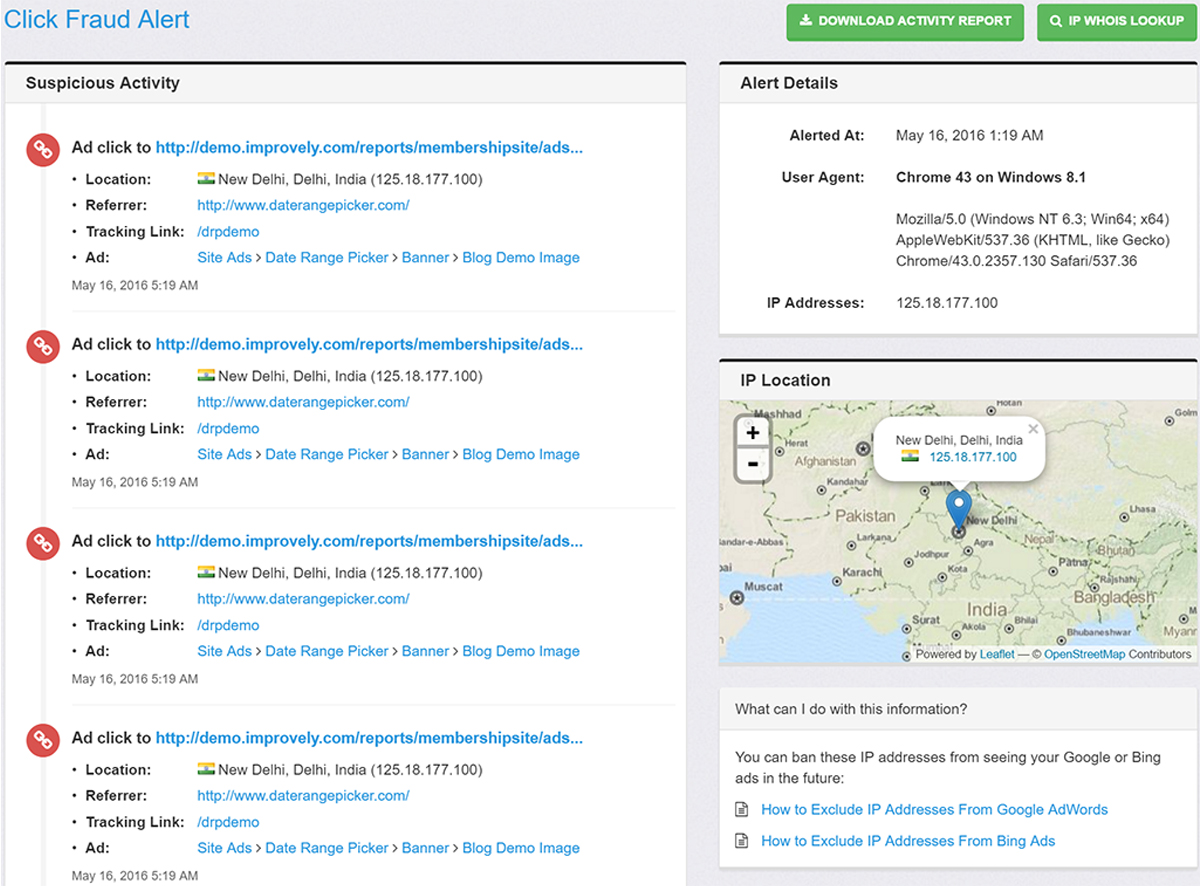
Luckily, advertisers can recognize the IP addresses associated with these ranges and block the ISP’s network range to stop fraudulent clicks. It is possible for authorized users to share a single IP address (for example, in a corporate environment). However, it is essential to investigate further if you feel something fishy about it.
Monitor Click Patterns
Watch for sudden and significant changes in clicks that aren’t part of your regular Google advertising or marketing strategy. These could be signs of fraudulent activity. Also, keep an eye on how often your ads get clicks. If you see clicks coming in at regular intervals, or if they happen consistently, it could mean Click Fraud, which is when automated bots click for you. Look into the sources that are doing the clicks for you.
If one place or website is doing more clicks than others, it’s a sign of fraud. Also, look at how the clicks are being distributed geographically. If you get a lot of clicks from places that aren’t related to your marketing plan, that could mean Click Fraud. Also, check if the clicks are coming in at odd hours or when it’s unlikely for actual users to be there. This can be a sign that automated click bots are doing the clicking.
Analyze Conversion Rates
If you want to identify Click Fraud, your conversion rates are like a compass for your digital marketing. Conversion rates are the KPIs that tell you the number of clicks on your ad that resulted in meaningful actions (e.g., purchases, sign-ups, or inquiries). Start by establishing your ad campaign conversion rates when your ad campaigns are performing well. This will provide you with a baseline against which to measure future performance.
Track your ad conversion rates over time. See if there are any significant changes to your established conversion rates. A sudden decrease in conversion rates could indicate something is amiss and should be looked into further. Look at how often your ads convert clicks. Most genuine users spend some time between clicking your ad and converting. Let’s say you have a furniture store & running ads to boost sales but analyzing those fraud conversions; in that case, you need to identify the click fraud activities. Unusually fast conversions after clicks can be a sign that fraudulent activities are taking place.
Adjust Your Ad Targeting
When identifying Click Fraud, fine-tuning your ad targeting can be a game-changer. Here are some ways you can optimize your PPC ad for success
- Define your target audience by looking at demographics, interests, location, and other factors. This helps ensure your ads reach the right people and reduce the risk of fraudulent clicks.
- Pay attention to click quality metrics like bounce rate, time on site, and conversion rate for different audiences. Significant differences between targeted and untargeted groups could indicate Click Fraud.
- Geo-targeting can help you limit your ad visibility to certain areas of your business. This way, you won’t get unwanted clicks from places where your products aren’t unavailable or irrelevant.
- Use negative keywords to ensure your ads don’t appear in irrelevant searches.
- Keep an eye on the referral sources that bring people to your website. Seeing suspicious referral sources or too many clicks without meaningful interaction could indicate Click Fraud.
6 Best Click Fraud Detection Software
While trying and stopping click fraud is excellent, it’s not always possible. Criminals have devised clever and tricky ways to do it, making it hard for regular businesses to fight back. Luckily, there are lots of click fraud detection services out there.
Here are some of our top picks.
Click Cease
With ClickCease’s powerful Click Fraud detection technology, you can monitor and block fraudulent clicks in real-time.
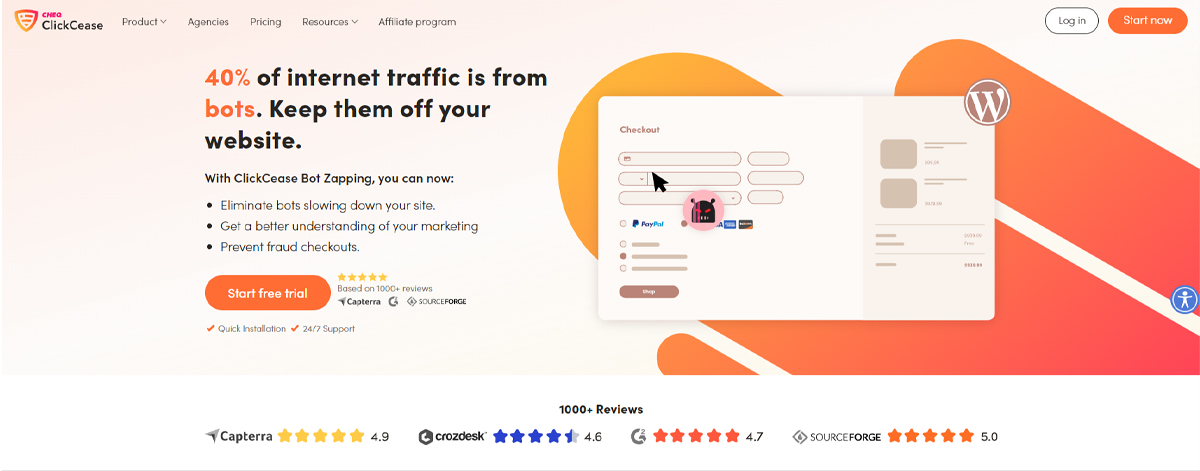
ClickCease uses sophisticated algorithms that analyze click patterns, identify anomalies, and automatically block suspicious IP addresses to help you make the most of your budget.
ClickGUARD
ClickGUARD solution is the most efficient and straightforward way to identify and reduce unnecessary clicks and guarantee that you only pay for genuine human clicks that are highly likely to convert.

ClickGUARD isn’t just about stopping fake clicks. It also gives you actionable insights to monitor who’s accessing your PPC campaigns and who you can control.
Apps Flyer
Protect360 is a powerful software solution from AppsFlyer that helps protect your website from click fraud. It keeps an eye on visitors who come to your website through Google PPC Ads.
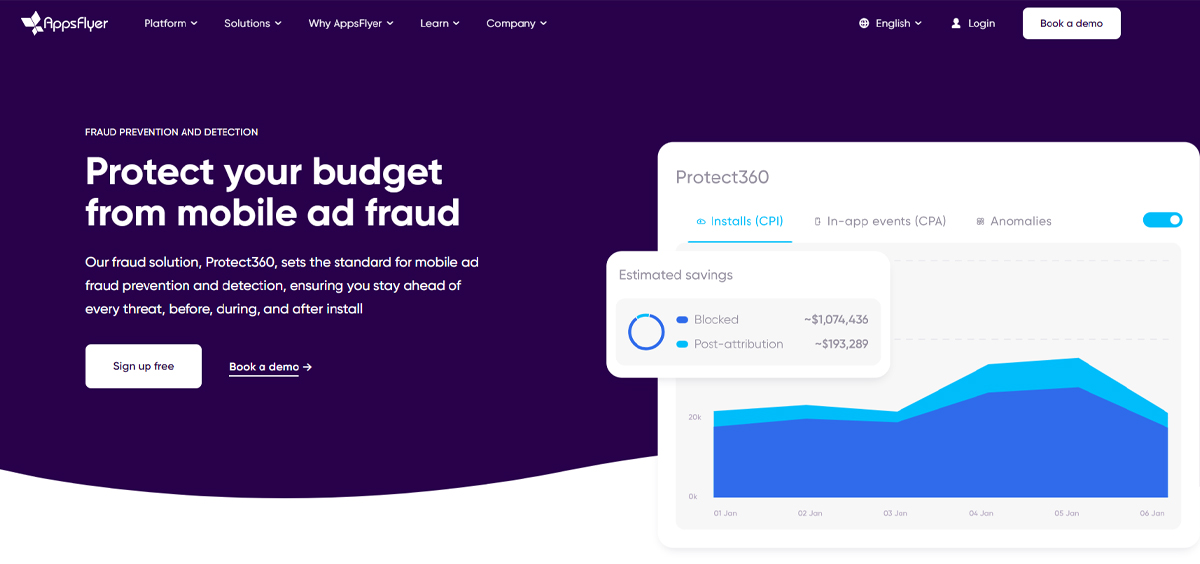
Its main goal is to detect and stop fraudulent clicks, so you can make sure your website gets real, organic traffic. But what makes Protect360 stand out is that it’s specifically designed to stop mobile ad fraud, so you can get the protection you need for your website.
Anura
Anura claims to be one of the most accurate fraud detection companies, with an accuracy of 99.999%.
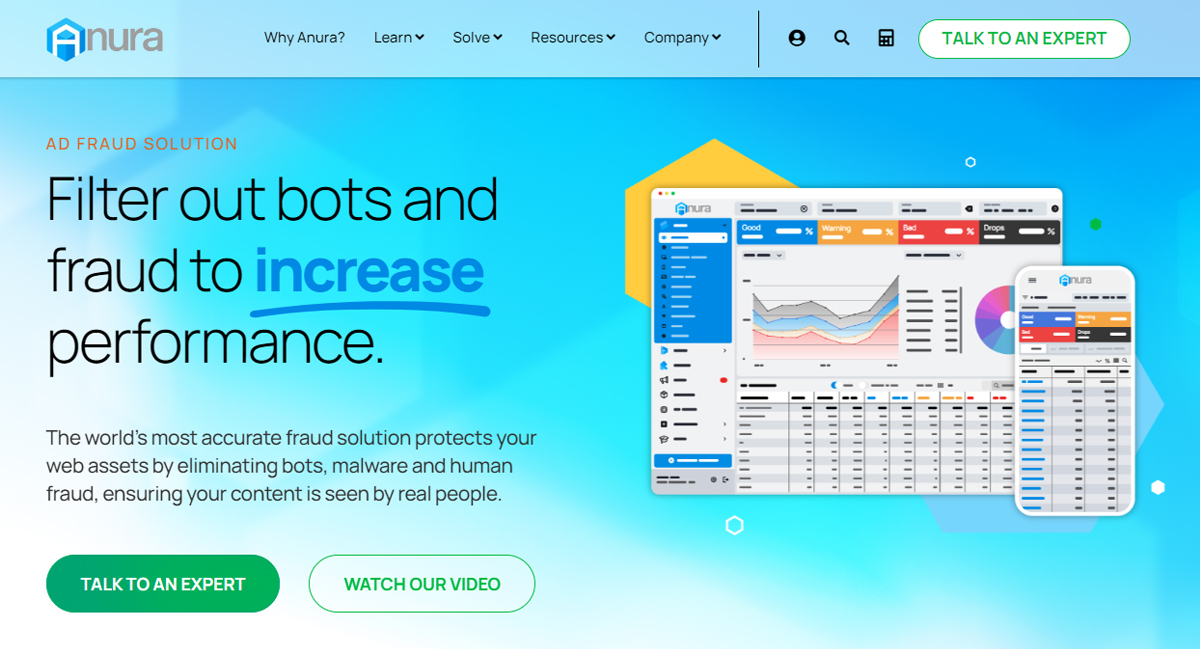
They take away the guesswork and give you the industry’s best fraud solution with actual results to boost conversions and marketing spending. Anura’s fraud solution and top-notch customer service provide you with everything you need.
CHEQ Essentials
Cheq Essentials is a new Click Fraud prevention tool developed by the world’s leading cybersecurity company, CHEQ, to protect your online advertising campaigns from click fraud. CHEQ is a leading cybersecurity company specializing in ad verification and fraud prevention.
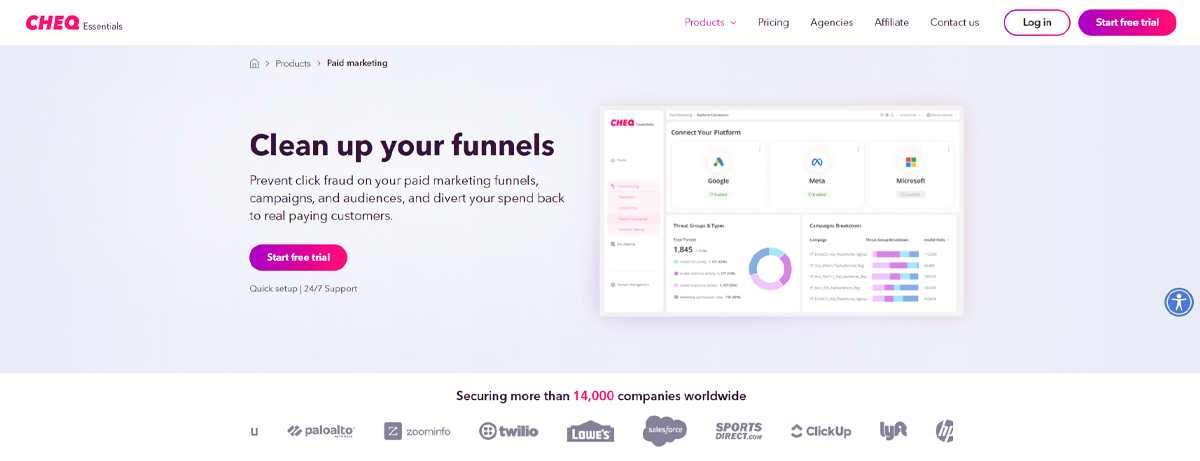
Cheq Essentials continuously scans your clicks, users, and other relevant information to detect suspicious activity and stop fraudulent clicks from draining your advertisers’ budgets.
Singular
Singular has a click fraud prevention system that ensures your Android and iOS installs are legit, that suspicious IP addresses are blocklisted, and that click injection on Android is prevented. It also uses deterministic techniques like tracking geographic outliers and the time to install to stop malicious click attribution.

This advanced tool is designed to help you avoid mobile ad fraudsters getting more innovative and sophisticated with their attack methods. Plus, it has a pre-attack fraud rejection feature that makes sure you get accurate reporting, so you don’t have to worry about misrepresentation.
Conclusion – Safeguard Your PPC Campaigns From Click Fraud
There’s no denying the power of PPC advertising. It’s a win-win-win for advertisers and publishers alike. You get flexible payment based on your campaign’s performance, and it’s easy to see why.
Unfortunately, the profitability of PPC advertising has also attracted fraudsters who abuse the system, especially in highly competitive industries. As online advertising continues to evolve, click fraudsters become more sophisticated. While reputable publishers like Google have click fraud detection algorithms in place, businesses need to take proactive steps to protect their interests.
But click fraud isn’t the only issue that can affect your PPC campaign’s effectiveness. You need expert PPC management to ensure you get the most from your ad budget and monitor campaign performance across all channels.
At Digital Guider, we’re here to help you craft a PPC strategy tailored to your specific needs. With the help of our PPC experts, you can protect your campaigns from the damaging effects of click fraud. Don’t let it be – let us help you get to PPC excellence!
